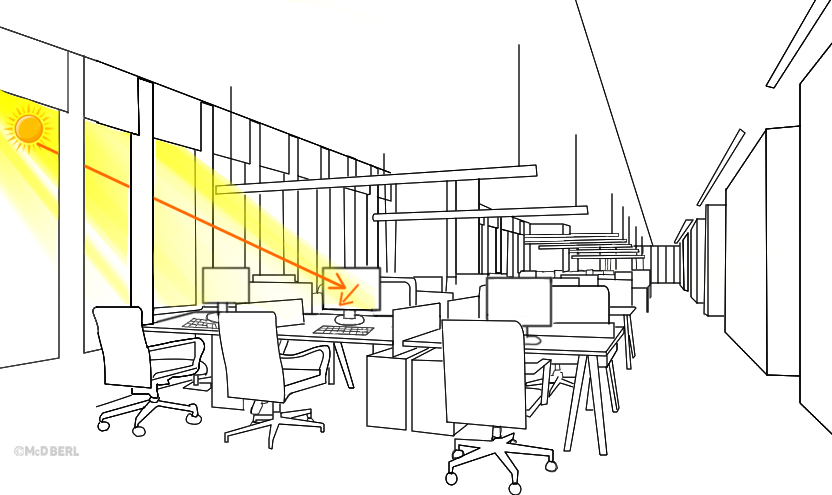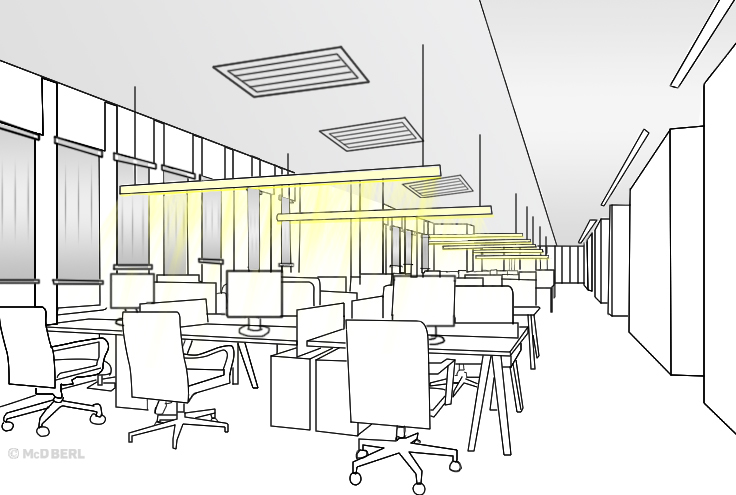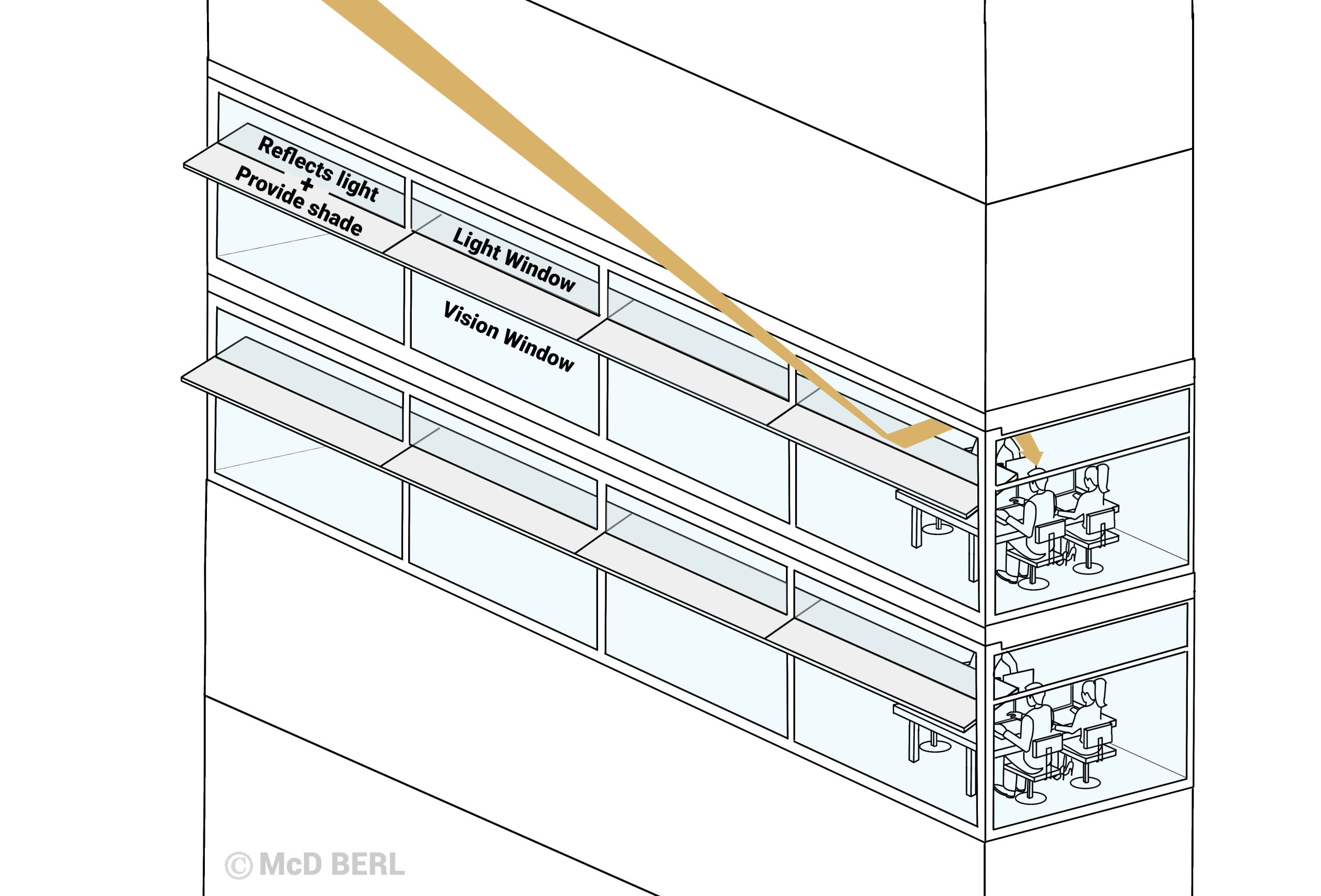Glass shields the building, yet glare prevails

When we think about the design of a building, we often consider aesthetics & functionality. However, one aspect that is frequently overlooked, but significantly impacts the quality of life within a structure is “Glare”. The unrelenting glare emitted by glass buildings serves as a harsh reminder. These fully glazed edifices intensify sunlight, transforming workspaces into oppressive and blinding environments. Occupants within these glass structures must contend with the persistent intrusion of glare, disrupting their focus, and plunging them into a perpetual quest for shade. They often find themselves squinting at computer screens and struggling to maintain concentration as the intrusive light disrupts their workflow.
Regrettably, the prioritization of aesthetics over the well-being and productivity of the occupants inside these glass facades is all too common. Glare caused by excessive and uncontrolled light can affect our comfort, productivity, and overall well-being. It’s a prime example of valuing form over occupants’ comfort, where architects and designers often neglect the practical needs of the individuals laboring within.

Internal blinds are used to mitigate glare issues, but this can inadvertently create a dark environment, necessitating the use of artificial lighting to illuminate the space. However, this increased reliance on artificial lighting not only leads to higher energy consumption for both lighting and air conditioning but also presents a concern regarding the absence of blue spectrum in these lights. The lack of blue spectrum can contribute to problems such as accelerated aging and increased fatigue among occupants, among other potential issues.

Addressing these concerns requires a multifaced approach. The solution lies in a comprehensive loom that combines by incorporating passive design elements like exterior shading devices, well-placed vegetation, and daylight harvesting systems. Including interior design elements like anti-glare coatings on windows and the placement of greenery can help filter and soften incoming light. Exterior landscaping, such as trees or shrubs, can provide natural shading and reduce direct sunlight exposure to the building. This approach not only improves the comfort of occupants but also enhances energy efficiency by reducing the need for artificial lighting and air conditioning.
Visual comfort in architecture is achieved by maximizing natural light and outdoor views in the built environment, enhancing the health and well-being of occupants. It’s crucial to bring in natural light using daylight enhancement strategies to meet desired light levels. For example, (as shown in the picture) the facades are designed with Vision and Light windows, the light windows harness indirect light into the space whereas vision window gives the outer view for the occupant. The light window having higher transmission percentages than vision windows to bring the daylight. Solar shading devices protect vision window from harsh sun, reducing heat gain and energy consumption.

These sustainable solutions not only mitigate the problems caused by glare but also contribute to creating a more pleasant and efficient office environment that aligns with modern sustainability standards.




